Stalin’s grave on the Red Square
In the U.S., Black History Month has begun. President Donald Trump has not canceled it, but it will not be observed in the usual way. Government agencies will not be marking it at all.
This is a deeply troubling trend. In recent years, Russia has also undergone a gradual revision of its history. Step by step, the authorities have reshaped attitudes toward Stalin and the Gulag, transforming it from a shameful chapter of history into a glorious and heroic era. The Russian government is now seriously revisiting the de-Stalinization policies that were implemented in the first two decades after the collapse of the Soviet Union.
Removing Memorials
At the end of last year, Valery Fadeev, head of the Presidential Human Rights Council in Russia, proposed removing the monument to Stalin’s repressions—the famous Solovetsky Stone—located on Lubyanka Square in Moscow. His reasoning? It made FSB officers uncomfortable. This is not strange but entirely logical—Fadeev has nothing to do with human rights. He is a Putin propagandist appointed to this once-legitimate position as a kind of mockery. In reality, he is more of an adversary to human rights than a defender.
Solovetsky Stone and FSB Headquaters
Fadeev explained why the monument had to go: “People don’t really hold remembrance events [at the Solovetsky Stone]; instead, they hold protests against the employees of the building on Lubyanka—FSB, KGB, NKVD. They say: ‘We are here, we remember everything, and you are the same as them.’” In other words, he is voicing the complaints of the FSB leadership, who are tired of having a monument to their victims right outside their windows.
Another one of his ideas is to eliminate all plaques installed as part of the Last Address project, Russia’s equivalent of Germany’s Stolpersteine memorial initiative, launched by the Nobel prize-winning Memorial movement. These small metal plaques mark the last known residences of victims of Stalin’s terror. Together, they form a dispersed, networked memorial spanning cities around the world. But Fadeev doesn’t like them:
"You walk through a city of the dead. You walk, and everywhere there are the dead, everywhere reminders of the horrors of 1937... There are so many plaques; in central Moscow, nearly every building housed someone who was repressed. You walk through this magnificent city, and on every building, there are plaques. But this splendid city, these buildings—they weren’t only home to the repressed and murdered.”
At the end of last year, Russian authorities shut down Moscow’s Gulag Museum, citing “fire safety violations.” This was one of Russia’s best and most modern history museums, offering an alternative perspective on the past—somewhat reminiscent of the National Museum of African American History and Culture in Washington, D.C.
Gulag Museum in Moscow
The closure of the Gulag Museum is not temporary but indefinite—in other words, everyone understands that this is just a pretext. The real reason is that Stalinism is becoming a state ideology, almost a religion, in Putin’s Russia. Any reminders of the previous condemnation of state terror must be eradicated.
Since the invasion of Ukraine, glorification of Stalinist terror has turned into an orchestrated state policy. Recently, it was revealed that over the past two years, the Prosecutor General’s Office has revoked around 4,000 decisions on the rehabilitation of repression victims, claiming that they had, in fact, been justly punished—allegedly for collaborating with the Nazis. These cases overwhelmingly involve residents of former Soviet republics who fought against Stalin’s regime. Those who have been “de-rehabilitated” have now officially been reclassified as traitors to the motherland.
Saint Stalin
Alongside official state policy, the mythologization of Stalin’s image is also taking place—sometimes in completely deranged forms. The Russian Orthodox Church has joined in the revival of Stalin’s cult. Icons depicting the Soviet dictator are increasingly appearing in churches.
It is difficult to imagine anything more illogical—after all, under Stalin, thousands of Orthodox priests were executed, churches across the country were destroyed, and believers were persecuted and sent to the Gulag. However, in recent years, an almost alternative biography of Stalin has been invented.
Icon of Saint Matrona and Stalin
The “normalization” of Stalin’s image within the Church began with the cult of Saint Matrona of Moscow (a 20th-century saint), who, according to legend, met with Stalin shortly before the end of World War II—though this has no historical basis. Nevertheless, this myth led to the creation of icons depicting Matrona alongside Stalin. Eventually, icons featuring Stalin alone began to appear, dedicated to the Soviet victory in the Great Patriotic War. Some of these icons were even placed in the Main Cathedral of the Armed Forces near Moscow.
In recent years, a myth has taken shape suggesting that Stalin supposedly repented for everything he did before the war. This myth is based on a real event: in 1943, Stalin did summon the last three surviving metropolitans to the Kremlin and instructed them to elect a patriarch. However, he did this purely for propaganda purposes, hoping to impress the religious communities in the West ahead of the Tehran Conference with Roosevelt and Churchill.
But the clearest sign of Stalin’s glorification is the ever-growing number of monuments. In recent years, at least 100 new Stalin monuments have appeared in Russia—90% of all existing monuments to the dictator were erected under Putin. This trend accelerated particularly after the annexation of Crimea. Among these monuments, 22 are full-scale statues.
The Ideologue of Putinism
Reverence for Stalin has already become a mark of good taste among the new generation of Putin-era officials. The record so far belongs to Georgy Filimonov, governor of Vologda, who is considered a rising star in Russian politics. Not long ago, journalists discovered that his office contained six images of Stalin—five portraits and a bust. “We owe this extraordinary figure both our victory in the Great Patriotic War and the creation of nuclear weapons. Even if we acknowledge the tragedies and sacrifices of that era, we cannot erase history, we cannot renounce our greatness and our achievements,” the governor declared.
The constant invocation of Stalin’s image is no coincidence, as he can rightfully be considered the founding father of modern Russian ideology. On May 24, 1945, during a Kremlin banquet celebrating victory over Germany, Stalin made his famous toast “to the Russian people”, the text of which was even printed in Soviet newspapers:
"I drink, first and foremost, to the health of the Russian people, because it is the most outstanding nation among all the nations that make up the Soviet Union."
Stalin Toasts "To the Great Russian People," Painting by Mikhail Khmelko, 1947
This toast became the starting point of a new Stalinist ideology. Before this, Soviet rhetoric had centered on internationalism and world revolution, but now everything changed: Stalin declared the superiority of the Russian people, marking the beginning of a new era of Russian nationalism.
Until then, the high priests of the communist cult had been required to preach ideals of equality, brotherhood, and the dictatorship of the proletariat. They were supposed to assert that the battle between capitalist society and the communist world would inevitably end in victory for communism, ushering in a single global order. But after 1945, Stalin no longer needed this theory. In fact, it had become dangerous—because it implied free exchange of ideas and competition. So, Stalin openly proclaimed a return to the ideals of the Russian Empire. The next phase was the crackdown on the West and on “rootless cosmopolitans” who had fallen under its influence—meaning the cultural intelligentsia.
This is precisely the policy being replicated by today’s Russian government. In this sense, modern Putinism is an exact reincarnation of late Stalinism in all its manifestations: an imperial ideology defined by anti-Westernism, a cult of the leader, repression of dissenters branded as traitors, and the absolute supremacy of the state over the individual in all matters.
Historical Myths
It is widely assumed that Russian and American histories share no common ground. In fact, they are often seen as diametrically opposed—Russia’s past marked by tyranny, the Gulag, and autocracy, while America’s is defined by freedom, equal opportunity, and democracy.
In reality, these histories share a crucial similarity—namely, the way history itself is used in modern politics.
History is one of the most powerful forces polarizing society. In both Russia and the U.S., society is divided precisely over historical memory. Pride or shame—this is the key fault line in both nations.
The Soviet Gulag and slavery in the United States are, of course, fundamentally different phenomena. Yet I will draw a parallel between them because each represents a central historical trauma in its respective society. Russian society is divided over Stalin. American society is divided over slavery. At their core, both debates stem from the same fundamental questions: Can violence be a source of pride? Should we turn the page and move on, or must we first repent? Is greatness built on the bones and blood of millions something to celebrate? Can such a legacy be considered true greatness? And is it necessary to acknowledge the crimes of one’s ancestors—or is it more important to uphold a historical myth, the belief that the past was glorious?

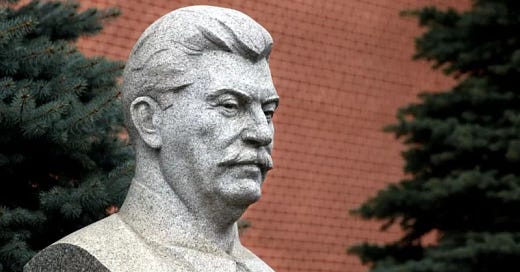



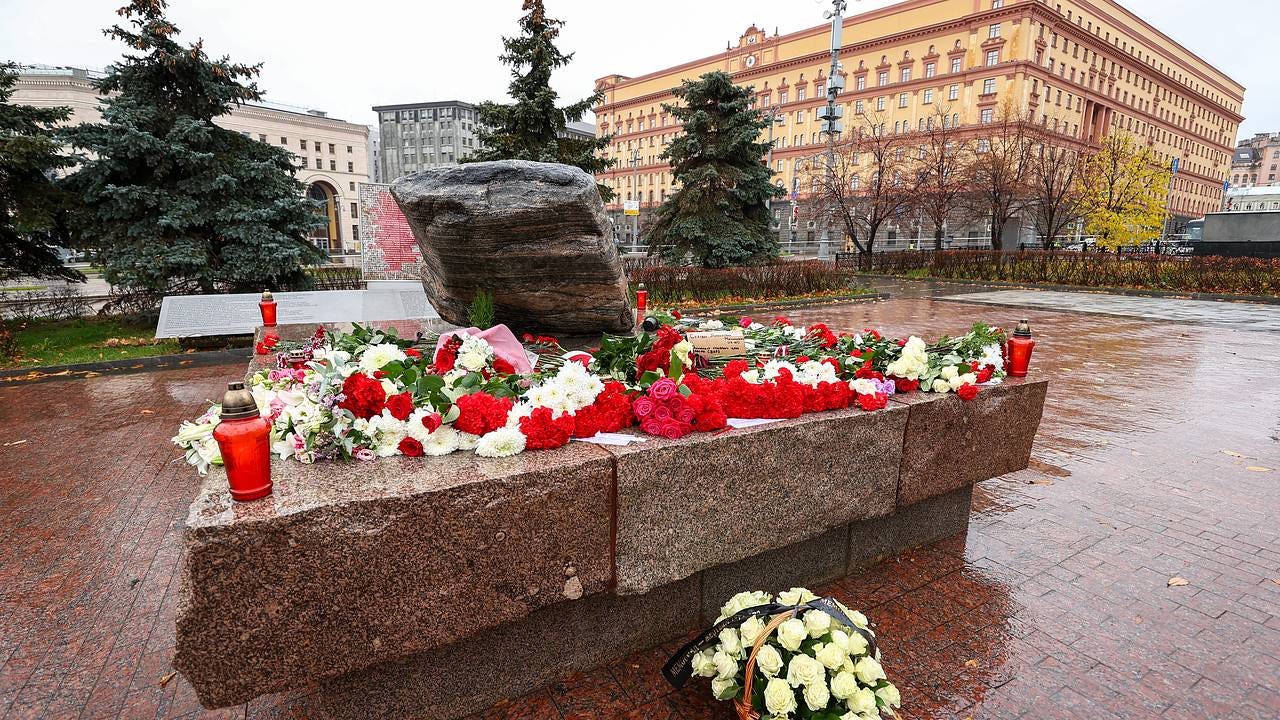
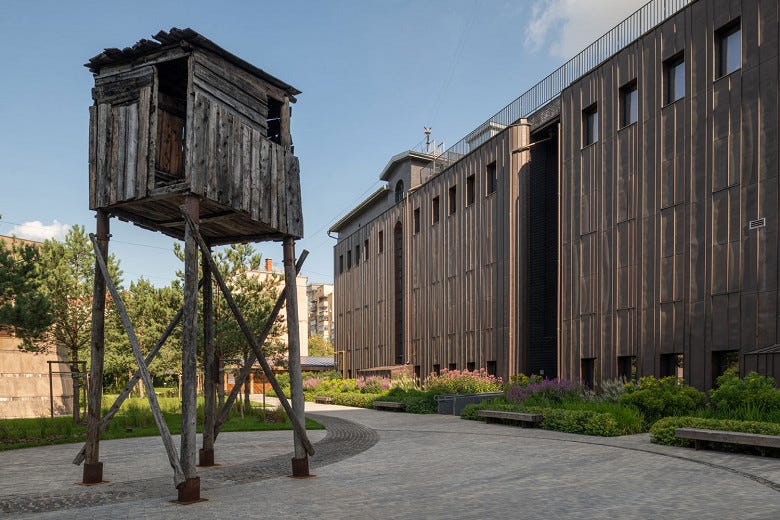
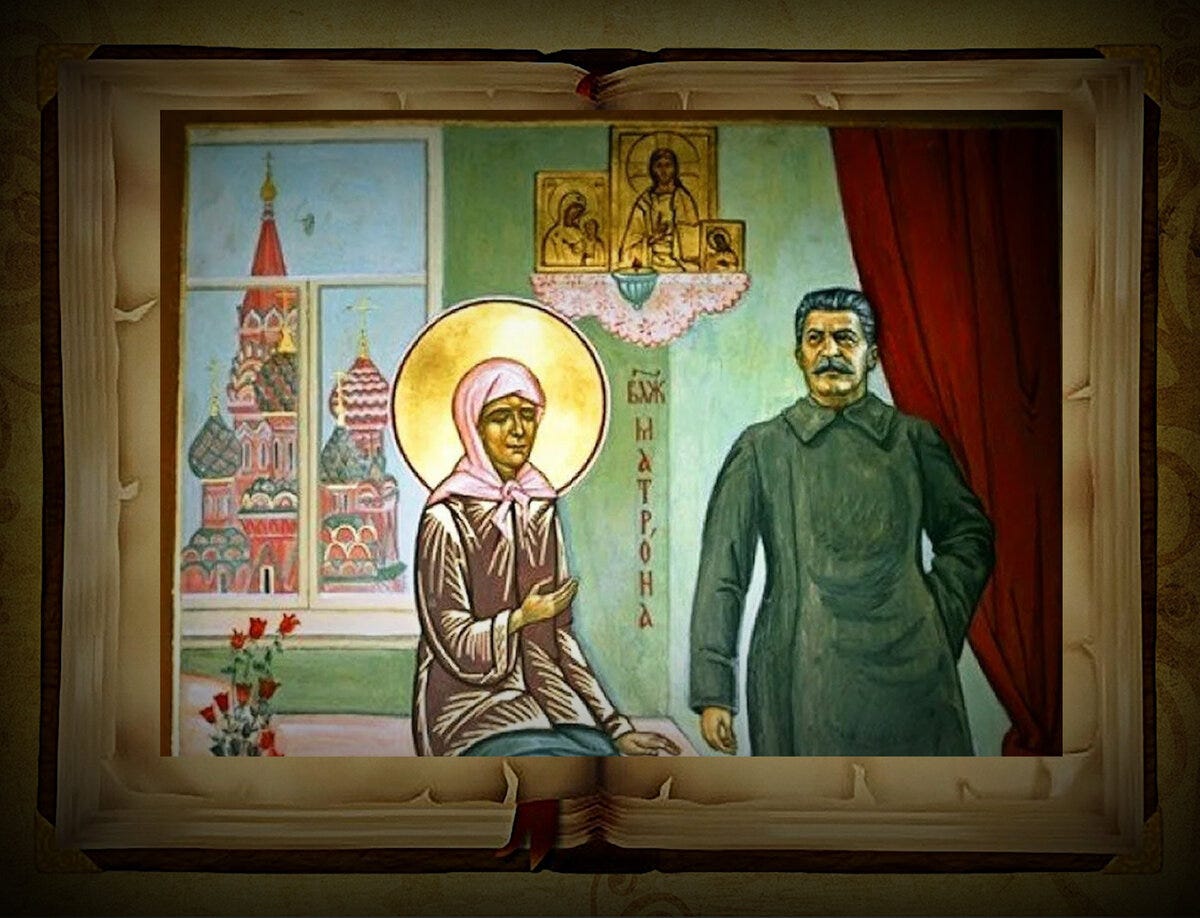
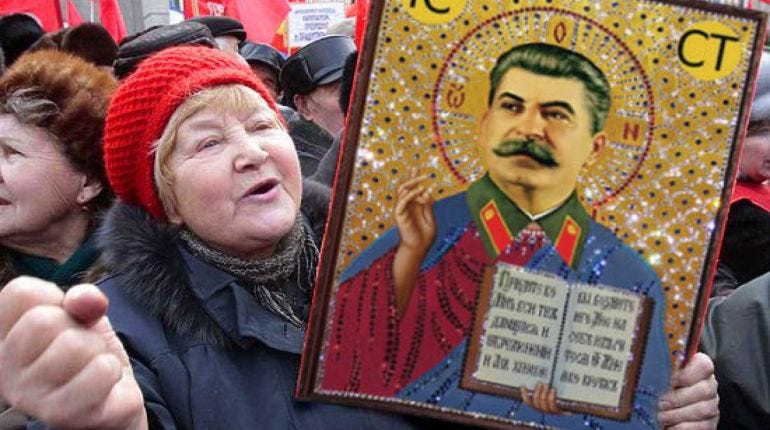
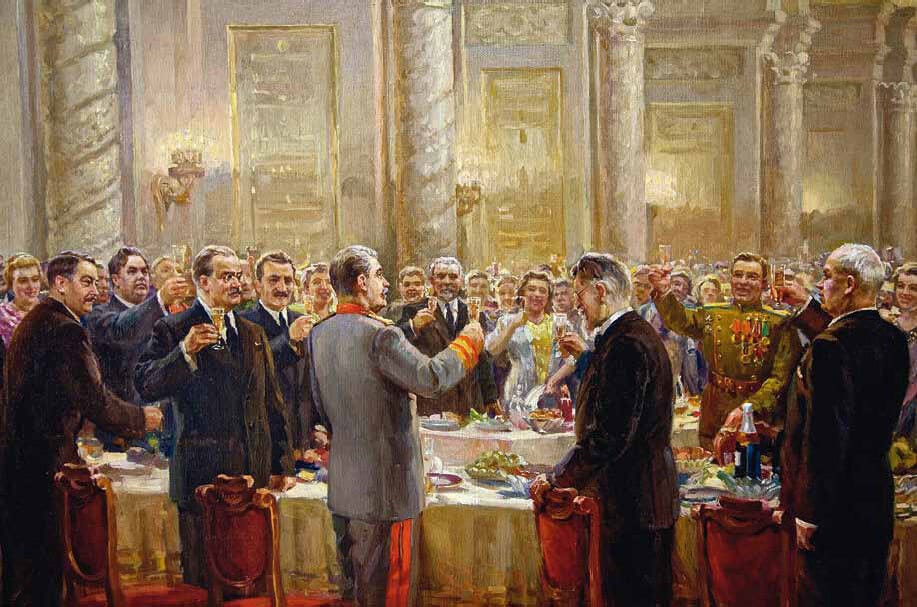
As a Russian living in the USA but still following the Russian news, I am terrified by the glorification of Stalinism. I grew- up in Stalin's time; he was our "father," I went to Sibiria to build Communism. And at some moment, we woke up. But not all. Communist propaganda transformed Russian people into slaves, and they continued to be slaves. My father spent seven years in Gulag for his novel Bread, but after, he became a somewhat successful writer, following Stalin, like everybody else. (My memoir, Wrong Country). Putin is a small Stalin, and Russia has no way out with these criminals in power. I am so sad for my former country.
It is part of totalitarian moves to totalise all aspects of worlding, this is more than totalising all aspects of society or market or geography. (Worlding is a type of selfing, except non-ego focused.)
Empires never know where there borders are. Control is about making the one oneness one over everyone inside and out, as such it is attractive to narcissists who are suiting themselves [[narcissists = those who lack empathy, facultatively, professionally or deep in their genetic profile and they select systems and fashions and icons that encourage the same transactional binary zero-sum games of death &death cults.../=]]
We need to police narcissism, particularly those on our side.
And a link to me using that priest who blessed a Stalin memorial as an example of this
https://whyweshould.substack.com/p/bad-worldbuilding-roger-bad